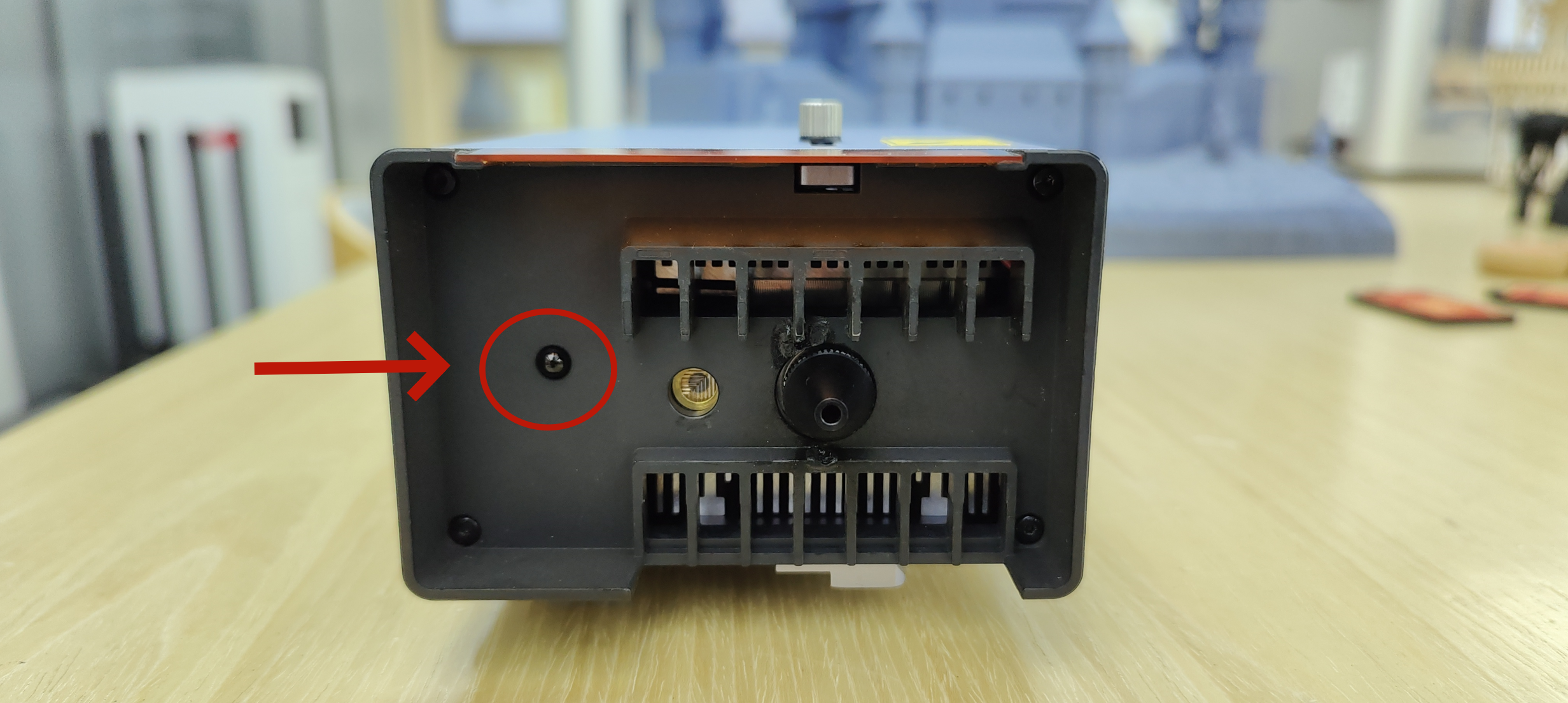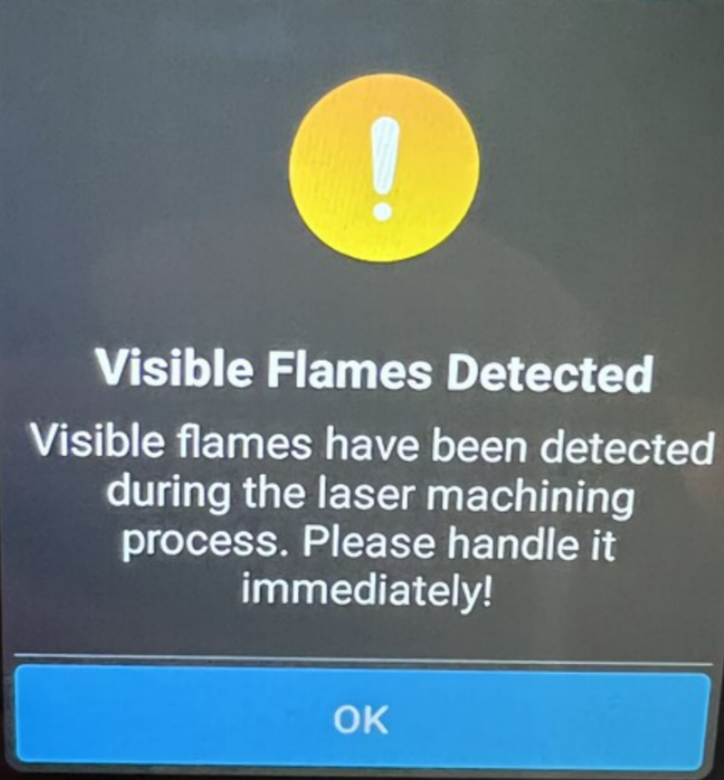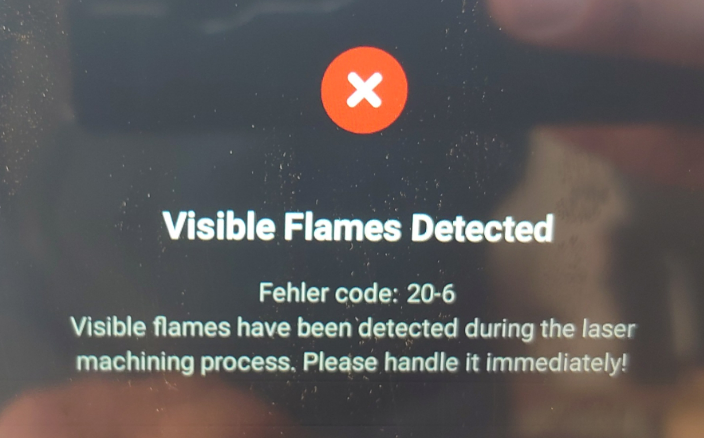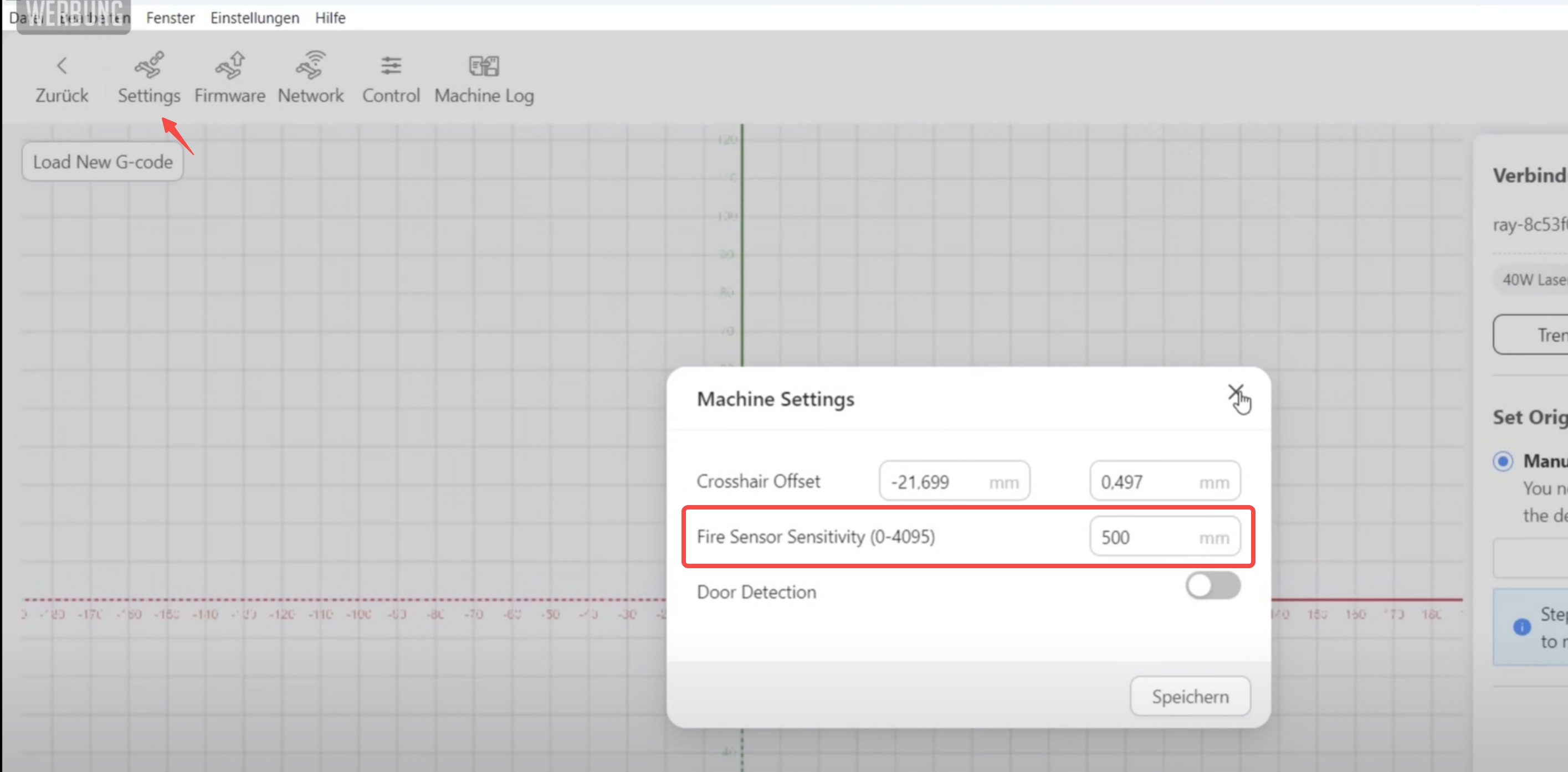¶ 1. Flame Sensor Introduction
¶ Where is it located?
The 20W/40W laser modules are equipped with a flame sensor (see image below).

¶ How does it work?
The flame sensor detects flame by sensing the infrared radiation emitted by flames. When a flame is present, it emits infrared radiation within a certain wavelength range. The flame sensor is designed to detect this specific wavelength of infrared radiation and trigger a response when it detects flames
On a Snapmaker machine, when the system detects the flame sensor triggering, the touchscreen will display an error message "Visible Flames Detected" and automatically stop operation to prevent fire.
- Error message on SM 2.0:

- Error message on Artisan:

- Error message on Ray:
Since the Ray model is not equipped with a screen, error messages are presented through Luban. When connected to Luban, if the flame sensor triggers, Luban will display an error message.
Please note that the flame sensor is triggered by the laser wavelength, but it may also be sensitive to light from other sources, including sunlight. The light energy from sunlight may accidentally trigger the sensor. To reduce the likelihood of this occurring, you can try adjusting the sensitivity settings of the sensor or locating your machine in an area less prone to direct sunlight exposure.
¶ 2. How to Adjust Sensitivity:
¶ 2.1 Sensitivity Introduction:
The sensitivity value ranges from 0 to 4095, with higher values indicating higher sensitivity.
- High sensitivity: 500 (factory default)
- Low sensitivity: 10
- Disable flame detection: 5000 (entering a value beyond the sensitivity range will be considered as disabling flame detection)
¶ 2.2 How to Adjust Flame/Fire Sensor Sensitivity:
For SM 2.0:
Swipe left from the right edge of the screen on the home page → Tap on Setting → 20W/40W Laser → Fire Sensor Sensitivity
Once you're in the Fire Sensor Sensitivity settings, adjust the value according to your needs.
Here's a video for your reference:
For Artisan:
When you're on the touchscreen home page, tap on Setting → Maintenance → Laser Calibration Procedure → Fire Sensor Sensitivity.
Once you're in the Fire Sensor Sensitivity settings, adjust the value according to your needs.
Here's a video for your reference:
For Ray:
After connecting to Luban, input the relevant values in the Settings option.

¶ 3. Solutions for flame sensor abnormal triggering
- Avoid working under direct sunlight.
- Lower the sensitivity of the sensor.
- When working with flammable materials, either reduce the power or increase the speed.
- If necessary, consider disabling the flame detection.
If you chose to disable the flame detection, please ensure proper supervision to prevent accidents.
Materials that are easy to catch fire when laser cutting or engraving include:
- Wood: Especially untreated or highly flammable types such as plywood and MDF.
- Paper: Thin paper or cardboard can ignite quickly.
- Plastics: Some plastics, such as acrylic or PVC, can produce flammable gases when heated by the laser.
- Fabrics: Synthetic fabrics like polyester and nylon can ignite easily.
- Foam: Foam materials like styrofoam can melt and produce flammable gases when exposed to high temperatures.
- Rubber: Some rubber materials can ignite when exposed to the laser beam.
¶ 4. Contact support
If you are still unable to resolve the issue of frequent flame sensor triggering after reading this article, please contact support at https://snapmaker.formcrafts.com/support-ticket. Our technical team will assist you further.